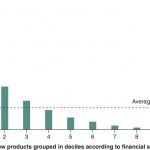The retina is a unique part of the nervous system that can be easily and inexpensively imaged. Changes and damage in the retina can signify advancing age and cellular dysfunction. With the rise of machine learning technologies and aging clocks, researchers are now exploring the development of a retinal aging clock using retinal imagery. The retina, being a reflection of capillary health, could provide valuable insights into the aging process. A recent review paper provides an overview of efforts to build retinal aging clocks, showcasing the potential for assessing biological age through retinal imaging.
In a scoping review titled “Estimating biological age from retinal imaging,” researchers evaluated existing studies that use retinal photography to develop biological aging markers. They found that models based on deep learning algorithms, such as ‘Retinal Age’, ‘EyeAge’, ‘convolutional network-based model’, and ‘RetiAGE’, can accurately predict chronological age from retinal images. These models show promise in reflecting age-related parameters and clinical associations.
While these models demonstrate comparable accuracy and performance, further research is needed to assess their applicability across diverse populations. The potential clinical implications of using retinal age models to predict mortality and morbidity are significant, with accelerated aging correlating with mortality risk and associations with cardiovascular disease and diabetic retinopathy. Despite the promising results, the clinical relevance of these models still needs to be determined through additional research and trials.





